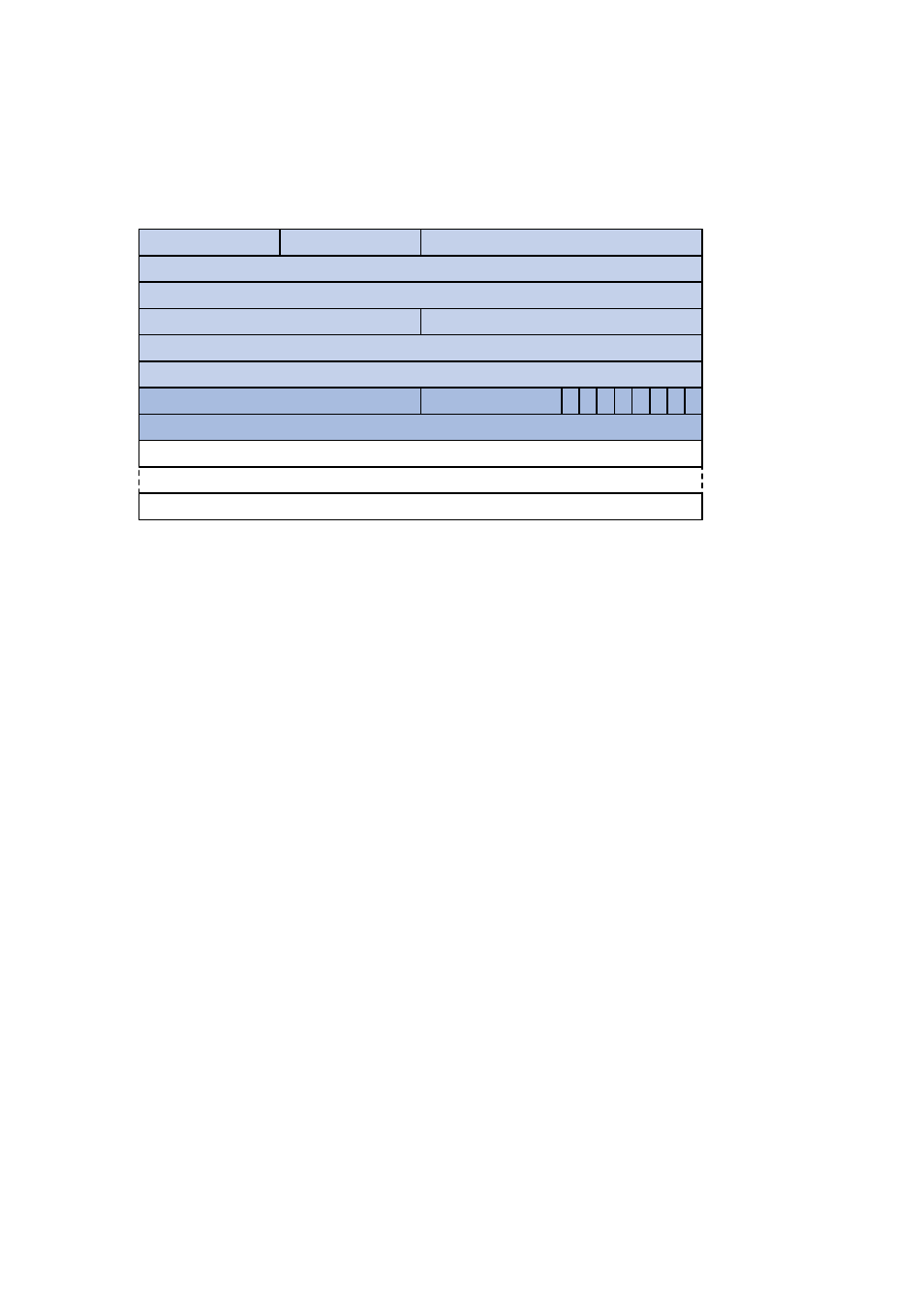Lsr packet – H3C Technologies H3C WX6000 Series Access Controllers User Manual
Page 246

25-12
LSA). The LSA header occupies small part of an LSA to reduce traffic between routers. The recipient
checks whether the LSA is available using the LSA header.
The DD packet format:
Figure 25-11
DD packet format
...
Version
2
Router ID
Area ID
Checksum
AuType
Packet length
Authentication
Authentication
Interface MTU
DD sequence number
LSA header
Options
0 0 0 0 0 I M
M
S
0
7
15
31
LSA header
Major fields:
z
Interface MTU: Size in bytes of the largest IP datagram that can be sent out the associated
interface, without fragmentation.
z
I (Initial) The Init bit, which is set to 1 if the packet is the first packet of database description packets,
and set to 0 if not.
z
M (More): The More bit, which is set to 0 if the packet is the last packet of DD packets, and set to 1
if more DD Packets are to follow.
z
MS (Master/Slave): The Master/Slave bit. When set to 1, it indicates that the router is the master
during the database exchange process. Otherwise, the router is the slave.
z
DD Sequence Number: Used to sequence the collection of database description packets for
ensuring reliability and intactness of DD packets between the master and slave. The initial value is
set by the master. The DD sequence number then increments until the complete database
description has been sent.
LSR packet
After exchanging DD packets, any two routers know which LSAs of the peer routers are missing from
the local LSDBs. In this case, they send LSR (link state request) packets, requesting the missing LSAs.
The packets contain the digests of the missing LSAs. The following figure shows the LSR packet format.